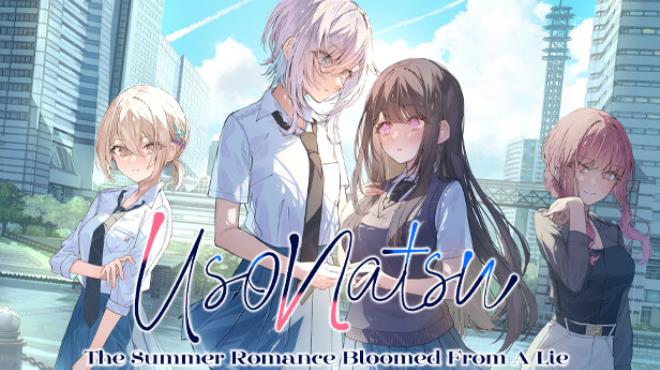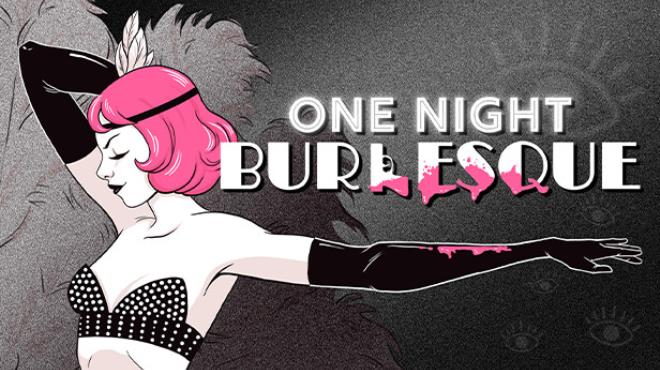There are lots of new games to look forward to this year, and one of them is The Lord of the Rings: Return to Moria. While many players have already started the fun in The Lord of the Rings: Return to Moria, it seems that there are some unlucky gamers out there who are having a hard time facing these random crashes in the game. Fortunately, there’s always a solution to fix the The Lord of the Rings: Return to Moria crashing issues and we are here to give it to you.
If you are also experiencing these The Lord of the Rings: Return to Moria crashes including the startup and in-game crashes, this exclusive troubleshooting guide is for you. Read on as we tell you the step-by-step process to fix these kinds of problems.
Why is The Lord of the Rings: Return to Moria Crashing?
Before jumping into the actual workaround, let us give you light on why you’re currently experiencing these crashing issues while playing The Lord of the Rings: Return to Moria.
While the developer of The Lord of the Rings: Return to Moria is expected to have a smooth launch, it is still unavoidable to face unwanted game issues. However, game-sided issues are usually fixed by just simply releasing updates, and knowing that not all players have the same experience as you, there’s a huge chance that the crashing issues you’re facing are an isolated case. Meaning, the problem could be on your side.
Here are the top reasons why The Lord of the Rings: Return to Moria is crashing on your computer:
- Not meeting the minimum system requirements.
- The game files of The Lord of the Rings: Return to Moria have been corrupted.
- Outdated graphics drivers.
- Incompatible DirectX version.
- The memory allocated to the game is not enough.
And the list continues with several other potential culprits that could be causing the issue. We will not be listing all of them in this article, as our main goal is to give you a solution to fix the The Lord of the Rings: Return to Moria crashes and freezing issues.
Fix #1: Restart Your Computer
Yeah, I know. This method maybe old but there are lots of game errors that are fixed by simply restarting your computer. Who knows? Restarting your PC will fix the crashing problems when you play The Lord of the Rings: Return to Moria.
Fix #2: Check the Game Requirements
Meeting the minimum system requirements of The Lord of the Rings: Return to Moria is important. Having at least the minimum requirements will ensure that your PC is capable of running The Lord of the Rings: Return to Moria. If your computer meets the minimum game requirements, then skip this section.
In case you forgot to check if your PC can run The Lord of the Rings: Return to Moria, check the system requirements below:
Minimum System Requirements:
• OS version: Windows 10/11 64-bit
• CPU: Intel Core i5 (Quad Core or better)
• Memory: 8 GB
• GPU: NVIDIA GeForce GTX 1060
• DirectX: DirectX 12
Recommended System Requirements:
• Additional Notes: Install Size 20GB
Recommended System Requirements:
• OS version: Windows 10/11 64-bit
• CPU: Intel Core i7 (6 Core or better)
• Memory: 16 GB
• GPU: NVIDIA GeForce RTX 2060
• DirectX: DirectX 12
Recommended System Requirements:
Fix #3: Check for Corrupted Files
If something is missing from the game components, expect that you won’t be able to run it smoothly. Make sure that you have all the needed The Lord of the Rings: Return to Moria game files to play it. By using Steam’s own verification system, you can easily ensure that you have the updated files of The Lord of the Rings: Return to Moria.
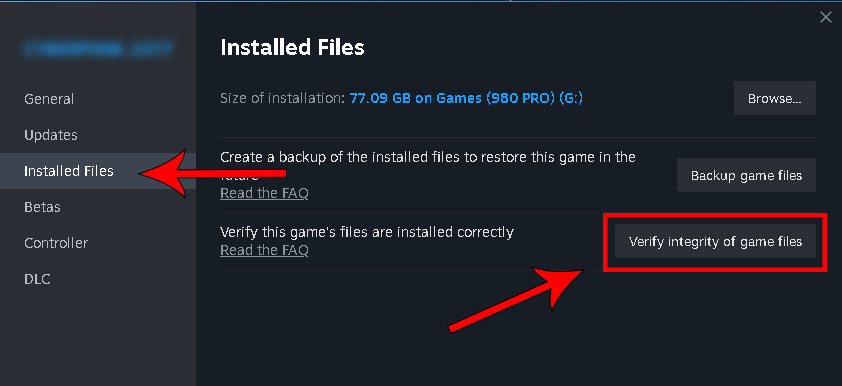
To verify the game files, follow this step:
- Open the Steam application and navigate to the Library section.
- Locate The Lord of the Rings: Return to Moria in the list and perform a right-click on it.
- Choose Properties and then go to the Local Files tab.
- Select the option to Verify the Integrity of the Game Files.
Just wait until the verification is complete and you’re good to go.
Fix #4: Update Your Drivers
To have smooth and crash-free The Lord of the Rings: Return to Moria gameplay, it is highly recommended to have the latest driver updates on your PC. In our case, updating our graphic drivers, DirectX, and Microsoft Visual C++ Redistributable Packages fixed the problem.
Manually updating PC drivers could be a problem for others, which is why using 3rd-party software can be helpful. If you’re not a tech-savvy gamer who is not familiar with this kind of troubleshooting, we recommend using Driver Easy as it is a user-friendly software that will do the updating for you. In our case, using this software fixed the crashing and other related issues when playing The Lord of the Rings: Return to Moria. Here’s how you can use it:
Step 1: Download and install Driver Easy for free.
Step 2: After the installation, run Driver Easy and click the Scan Now button. The program will scan your computer and detect any driver-related problems.
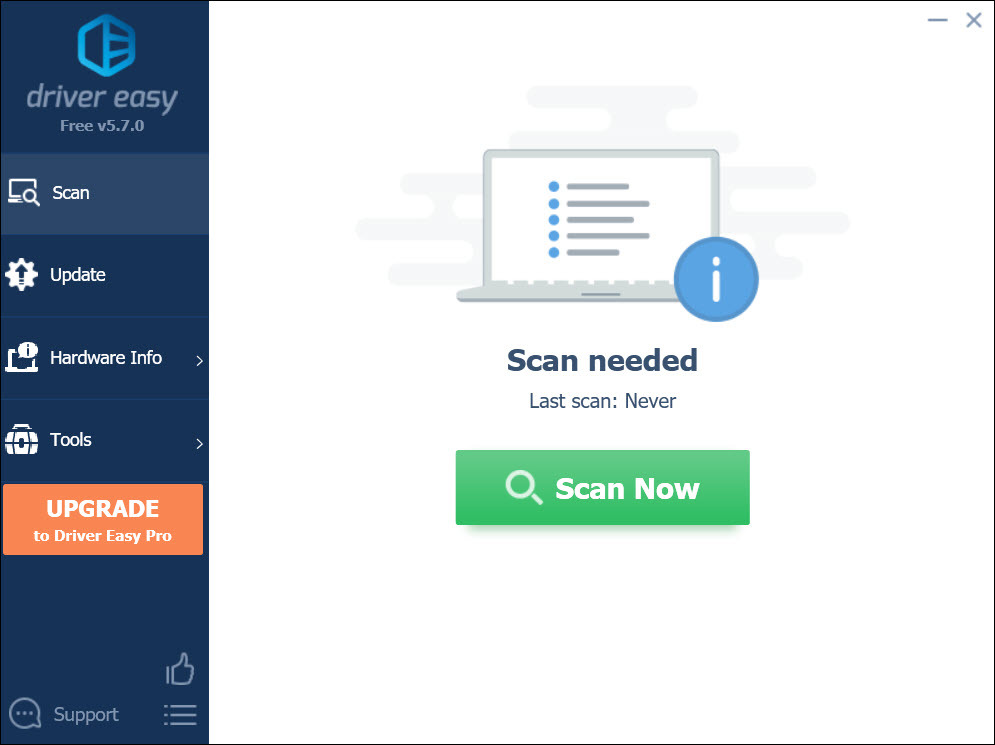
Step 3: After scanning, click the Update All button to update all of your missing or outdated drivers. At the same time, you will also get the correct and compatible updates for your PC.

Please note that using the Update All button requires a pro version. We recommend using this since Driver Easy offers a 30-day money-back guarantee in case you’re not satisfied with their program.
Step 4: Wait until the driver update installation is complete, the reboot your machine.
If your The Lord of the Rings: Return to Moria still crashes, you can move to the next fix below.
Fix #5: Disable In-Game Overlay
In-game overlays have been one of the top reasons why most video games right now are crashing. The Lord of the Rings: Return to Moria is not an exception as reports of having an in-game overlay, specifically Steam’s overlay, results in some frame-rate drops, as well as crashing. If you have an in-game overlay active on your computer, we recommend that you temporarily disable it to see if the crashing issues on The Lord of the Rings: Return to Moria are resolved. Below, you can find the steps on how to disable it on Steam, Nvidia, and Discord.
Steam Overlay:
- Go to Steam > Settings
- Then In-Game > Steam Overlay

For Nvidia GeForce:
- Open Nvidia Geforce Experience
- Click on the cog wheel at the top (next to your account name)
- Scroll down to toggle off ‘In-Game Overlay’
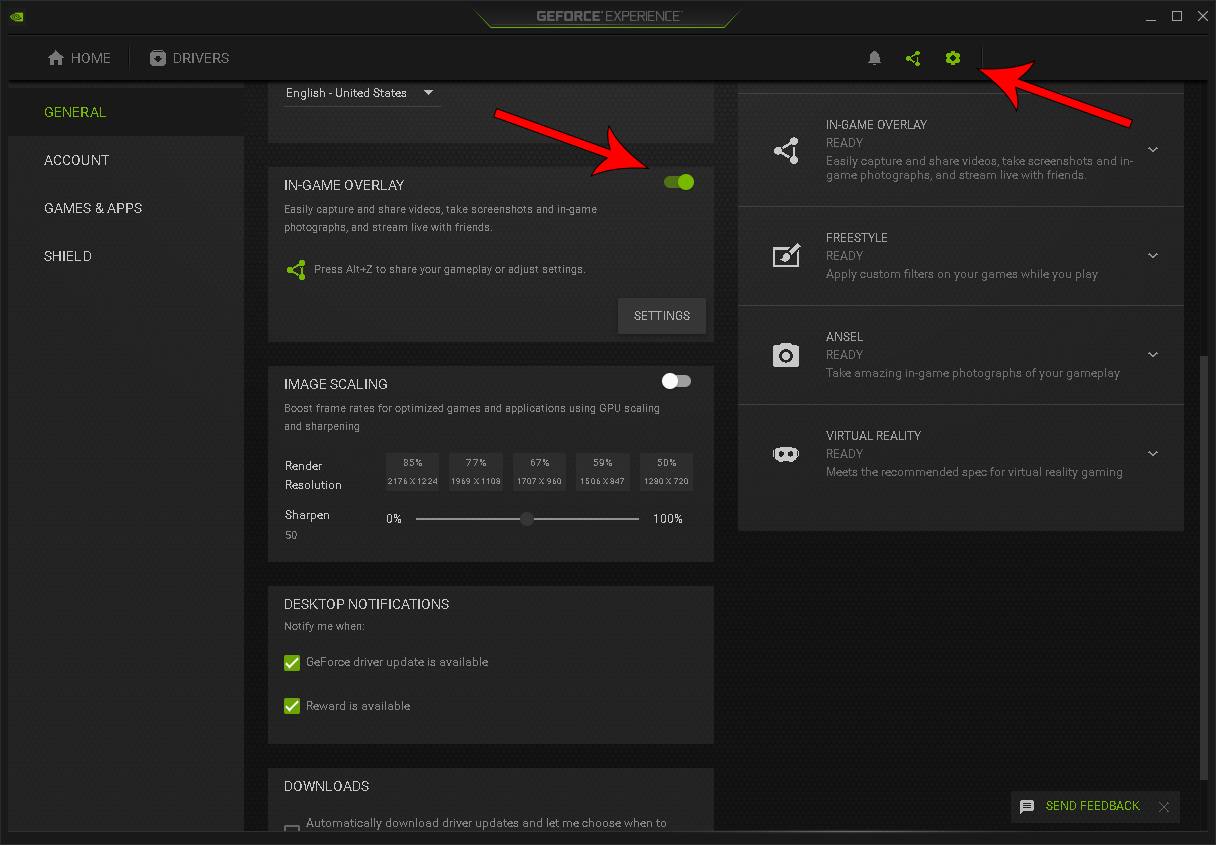
For Discord:
- Click on the cogwheel at the bottom (next to your account name)
- Scroll down to the Game Overlay tab
- Toggle off ‘Enable in-game overlay’
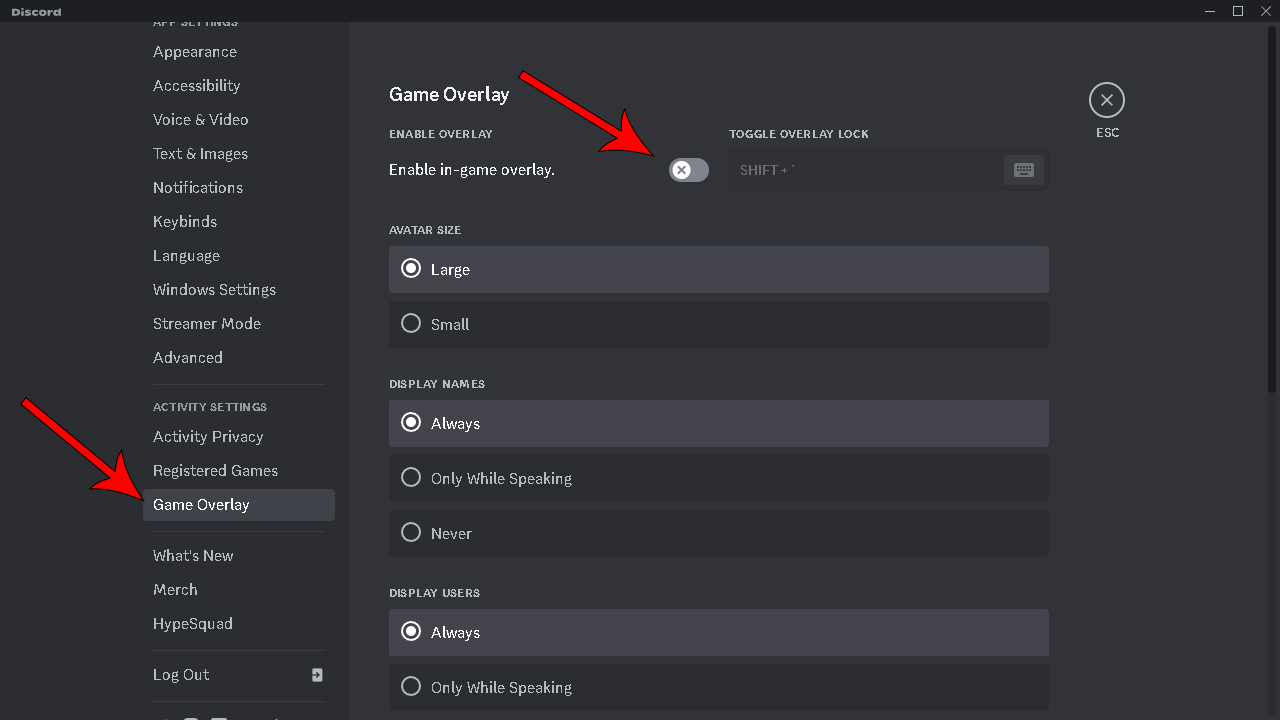
If you have any application running in the background with overlay features such as MSI Afterburner, FRAPS, or anything else, temporarily disable them or just completely shut down the application.
Fix #6: Free Up Some Memory
Since The Lord of the Rings: Return to Moria is running on a Windows operating system, it’s not surprising to find some unwanted applications and services running in the background, which can consume a lot of your PC resources. Your computer allocates memory to all these services, which can slow down the response time of The Lord of the Rings: Return to Moria.
If you want to enjoy a smooth and crash-free experience while playing The Lord of the Rings: Return to Moria, it is recommended that you shut down these unnecessary background services. Some well-known services and processes that are not usually used while playing The Lord of the Rings: Return to Moria are svchost.exe, DeviceAssociationServices, StorSvc, WdiSystemHost, and more. Closing your web browser and other applications may also help free up some memory. You can also enable Windows Game Mode to ensure that your PC will focus on The Lord of the Rings: Return to Moria instead of these unwanted apps.
Fix #7: Reset the DirectX Shader Cache
DirectX Shader cache is a cache system for storing shaders that can improve the overall responsiveness and performance of The Lord of the Rings: Return to Moria. This is where you can find the files created by the graphics system on your PC. However, sometimes, DirectX Shader Cache encounters some issues. So, many gamers usually want to clear the cache stored on their computer.
But is it safe to delete the DirectX Shader Cache? Yes, especially when the cache is already too large or if it is corrupted. But there’s nothing to worry about if you delete the DirectX Shader Cache as it will regenerate again with a new and fresh cache to improve the performance of The Lord of the Rings: Return to Moria.
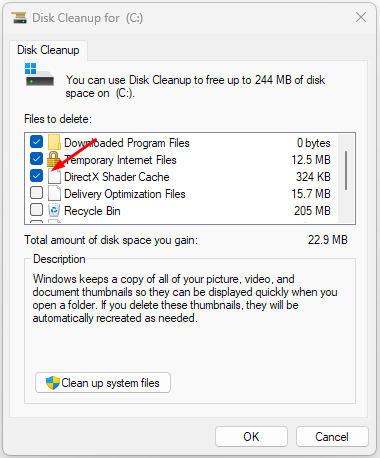
Follow these easy steps to clear your DirectX Shader Cache:
- Using the Taskbar search box, search for Disk Cleanup.
- Click on the Disk Cleanup app on the search result.
- Select the (C:) drive.
- Check the box next to the DirectX Shader Cache.
- Click the OK button to finalize the steps.
After that, restart your computer and see if you still get those annoying The Lord of the Rings: Return to Moria crashes.
Fix #8: Get the Latest Patch or Reinstall the Game
Having the latest The Lord of the Rings: Return to Moria update is a must to ensure that you get the latest game fixes that have been officially addressed by the developer. In case you still get the crashing issues despite having the latest update, you can try the uninstall/reinstall method. By reinstalling the game, you’re assured that you have all the needed files for the base game.
Fix #9: Contact the Official Support
If all of the listed methods above do not work, your last resort is to reach out to the official support of The Lord of the Rings: Return to Moria. You have two options to reach the support team. The first is by using the community page of the game on Steam, and the other one is by sending them an email. For starters, we recommend posting your issues on the community page of The Lord of the Rings: Return to Moria. Apart from the developer who can address your concern, other players may also share their experiences to help you fix the The Lord of the Rings: Return to Moria crashing problems.



